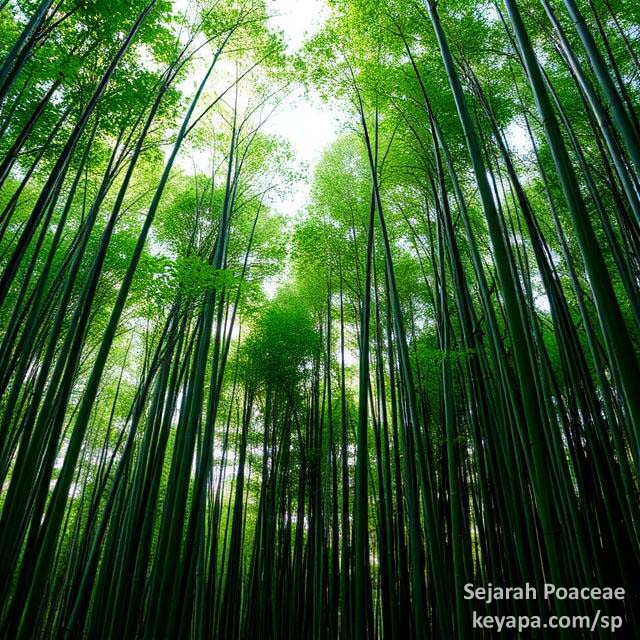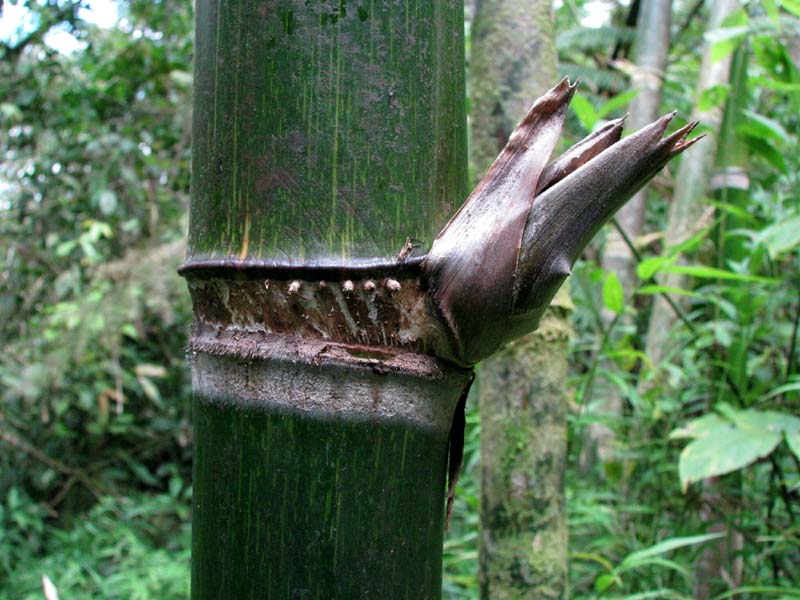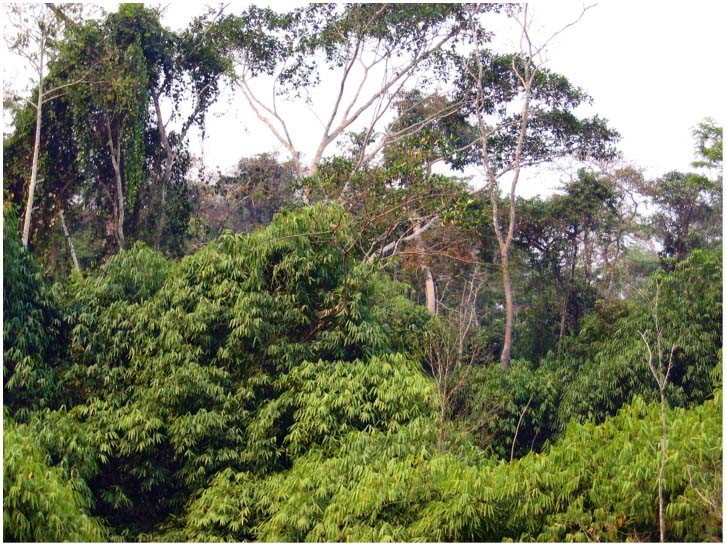
The common perception of bamboo has always been somewhat pacifistic, with images of cute pandas intermixed with the culms or images of the beautiful bamboo forests in temperate Asia. But research from the Amazon rainforest seems to show another aspect of this much-loved group of grasses.
In the SouthWest Amazon rainforest, a vast area of around 161,500 km2 is dominated by bamboos, mainly of the endemic species Guadua sarcocarpa and Guadua weberbaueri. These bamboos are interesting in that they are sarmentose. That is, they are erect at the base but are not self-supporting beyond 10 meters in height. Instead, they have recurved spines that they use to grapple onto trees for support.

The ability of these bamboos to dominate in an area where researchers expected rainforest was perplexing at first, and was originally attributed to some catastrophic natural or man-made event that allowed them to gain a “temporary” foothold in the masses of trees. However, researchers discovered that a third and even more fascinating mechanism seemed to explain the phenomenon.

They found out that the bamboos created a self-perpetuating disturbance cycle by physically damaging trees that were in the mid-canopy and below, and this ultimately resulted in low tree densities and low recruitment of new trees. The process of the creation and maintenance of this relatively stable state is fascinating.
The internodes of bamboos (like other grasses) are hollow, and these become filled with water after awhile, making them top heavy. This causes them to weigh onto (“load”) and crush adjacent trees. In the study, trees with trunk diameters between 5 to 29 cm had 7 times more damage (damaged canopy and reduced heights) in bamboo dominated areas than in areas with no bamboo (Bronson and Ashton, 2003).

The continued mechanical damage to trees and saplings created large gaps in the forest, which were then colonized by the bamboo, as well as some fast-growing, low density trees. Palms in particular are eliminated in bamboo dominated regions, with the species Euterpe precatoria and Iriartea deltoidea almost completely eliminated (Carvalho et al, 2013).
Unlike in mature rainforests, this state is not permanent, due to the gregarious or mass flowering of the bamboo species in that area. During periodic intervals, the bamboos in a population all flower together then die off. This life cycle of the bamboos in the Amazon was determined to be 27-28 years, with each synchronous population occupying an average of 330 km2, but with adjacent populations flowering almost at the same time, thus creating a wave of flowering. This mass flowering and dying creates an opportunity for the rainforest to reclaim the area for several years after the die-off (Carvalho et al, 2013).
However, this respite is temporary, and within 10-13 years a new generation of bamboos has re-established dominance over the area, reaching the upper forest canopy. At the 10 year mark, studies found average culm density of the bamboos at breast height to be 860 per hectare (for culms 2.5 cm and above), and by 13 years culm density nearly doubled and basal area increased almost three-fold (Smith and Nelson, 2011).
This ability of the bamboos to maintain a dominant stable state in a region predisposed towards humid rainforest reminds me of the grass-fire cycle in other Poaceae, where grass species use fire to maintain their hold in an area against much taller shrubs and trees. But the mechanism underlying the bamboo dominance is certainly unique and fascinating.
Literature Cited:
Bronson W. Griscom, & P. Mark S. Ashton. (2006). A Self-Perpetuating Bamboo Disturbance Cycle in a Neotropical Forest. Journal of Tropical Ecology, 22(5), 587–597. http://www.jstor.org/stable/4092188
Carvalho ALd, Nelson BW, Bianchini MC, Plagnol D, Kuplich TM, Daly DC (2013) Bamboo-Dominated Forests of the Southwest Amazon: Detection, Spatial Extent, Life Cycle Length and Flowering Waves. PLoS ONE 8(1): e54852. https://doi.org/10.1371/journal.pone.0054852
Smith, M., & Nelson, B. W. (2011). Fire favours expansion of bamboo-dominated forests in the south-west Amazon. Journal of Tropical Ecology, 27(1), 59–64. http://www.jstor.org/stable/25790828

Leave a Reply